Sailors' Orphan Homes, Kingston upon Hull, East Riding of Yorkshire
In 1821, The Port of Hull Society for the Religious Instruction of Seamen was founded at a public meeting in the St Mary's Boys' Schoolroom on Salthouse Lane, Hull. It was originally set up to minister to seamen who served during the Napoleonic Wars. Later the same year, the Society established a floating chapel on board a former Dutch merchantman named The Valiant.
Over the following years, the Society became increasingly involved the practical welfare of the men and their families. In 1837, it established the Sailors' Orphan Institution in Waterhouse Lane, Hull, to clothe and educate the fatherless children of sailors. In 1862, the Society decided to extend its activities and rented a house in Castle Row to house those who could not be looked after at home.
The Park Street Home
In 1867, a large new children's home as opened in Thanet House, a large property on Park Street, Hull. Its purchase was largely funded by a £5,000 donation from Sir Titus Salt, the Bradford manufacturer and philanthropist.

Sailors' Orphan Home, Park Street, Hull, c.1867. © Peter Higginbotham
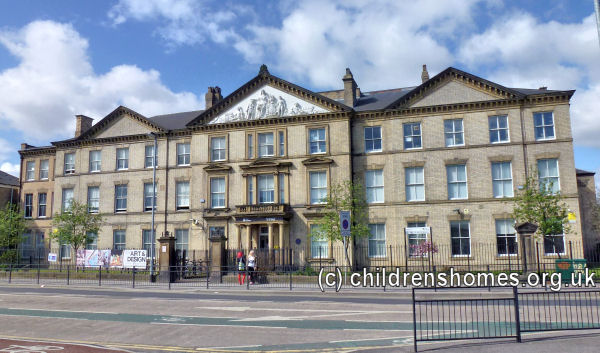
Former Sailors' Orphan Home, Park Street, Hull, 2013. © Peter Higginbotham
The pediment above the home's entrance contained a relief sculpture by James Day Kegworth. It featured Charity with orphan children, together with maritime emblems and the arms of Sir Titus Salt.
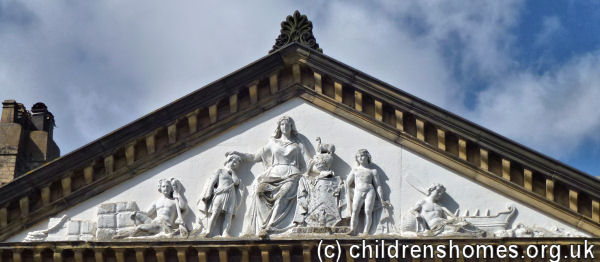
Former Sailors' Orphan Home, Park Street, Hull, 2013. © Peter Higginbotham
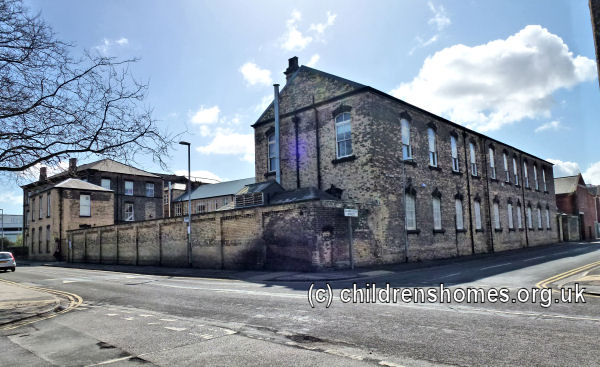
Former Sailors' Orphan Home, Park Street, Hull, 2013. © Peter Higginbotham
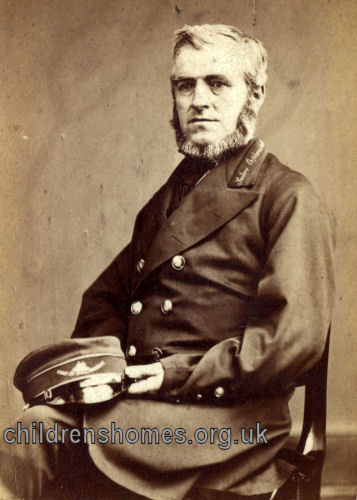
Uniformed staff member at Sailors' Orphan Homes, Hill, late 1800s. © Edgar van Engeland
The Park Street premises were initially accommodate 150 children. Extensions to the buildings in the early 1870s increased their capacity to 220. By 1893, however, the space was proving increasingly inadequate. The Society then decided to purchase a six-care site on Cottingham Road, on which to build a cottage homes development.
Cottage Homes
Children at the Cottingham Road site lived in family-style groups of up to 25 children in each 'cottage' (actually a good-sized house) under the care of a resident house-mother. The cottages, eventually ten in number, were arranged in a 'U' around a central green, with other buildings such as the school, hall and sanatorium placed at the far end of the site.
The official opening of the first two homes took place on June 6th, 1895. The cottages, named Hannah Pickard House and George Buckston Browne House after their respective benefactors, were declared open by Sir James Reckitt, founder of the household products company, Reckitt and Sons. Sir James also laid the foundation of a cottage which was to bear his name.
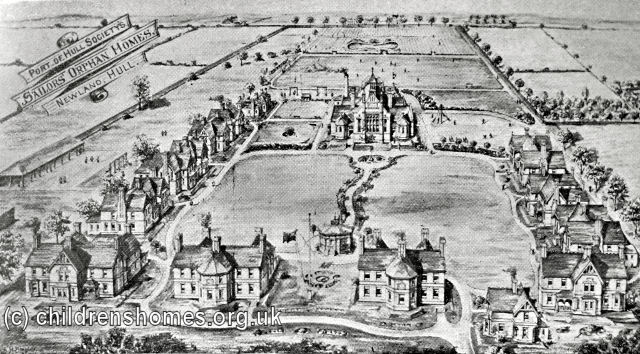
Newland Cottage Homes - bird's-eye view, Hull, c.1903. © Peter Higginbotham

Newland Cottage Homes from the south, Hull, c.1905. © Peter Higginbotham
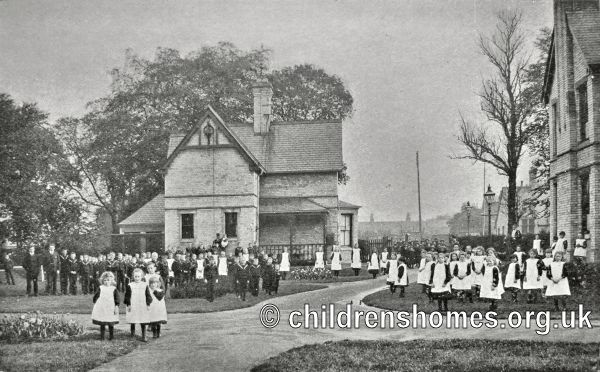
Newland Cottage Homes entrance gate and east lodge from the north, Hull, c.1907. © Peter Higginbotham
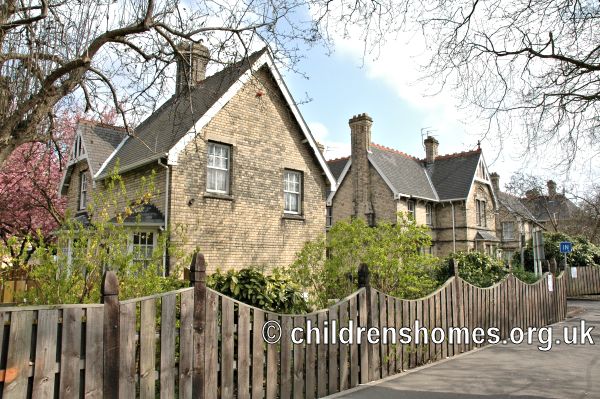
Newland Cottage Homes - West Lodge (left) and James Reckitt House, Hull, 2013. © Peter Higginbotham
Later cottages, again named after their benefactors, were Titus Salt House, William Richardson House, Francis Reckitt House, The Trinity House Home, The Whitby and Hartlepool House, and Dr Lee House.
The layout of the home is shown on the 1928 map below.
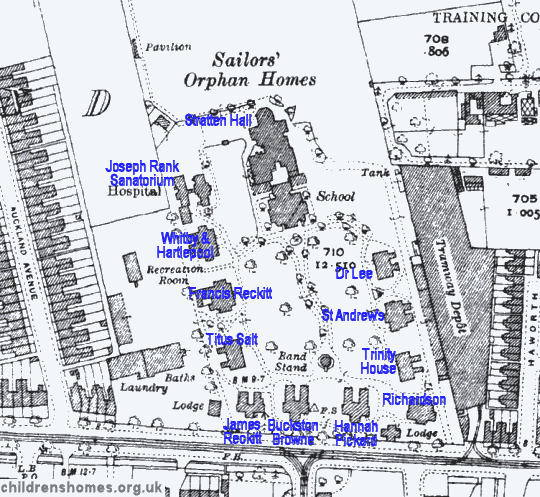
Newland Cottage Homes, Hull, c.1928.
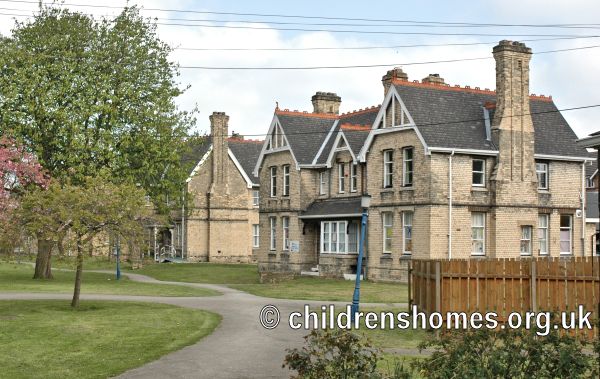
Newland Cottage Homes - West Lodge - St Andrew's House (left) and Trinity House, Hull, 2013. © Peter Higginbotham

Newland Cottage Homes - Trinity House, Hull, early 1900s. © Peter Higginbotham
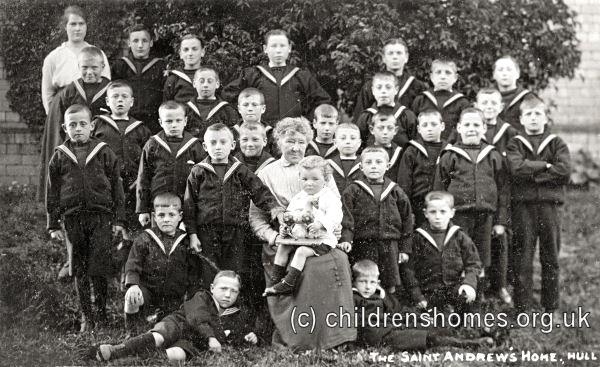
Newland Cottage Homes -St Andrew's House, Hull, early 1900s. © Peter Higginbotham
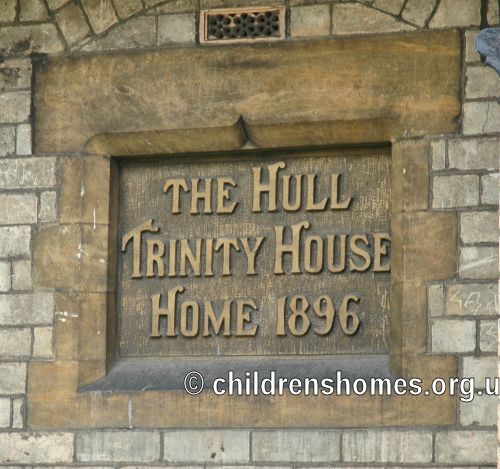
Newland Cottage Homes - West Lodge - St Andrew's House (left) and Trinity House, Hull, 2013. © Peter Higginbotham
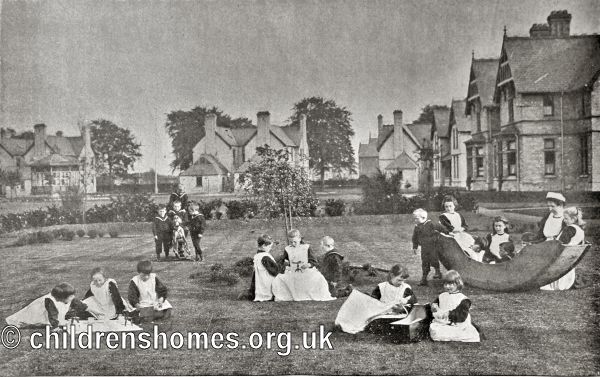
Newland Cottage Homes - summertime, Hull, c.1907. © Peter Higginbotham
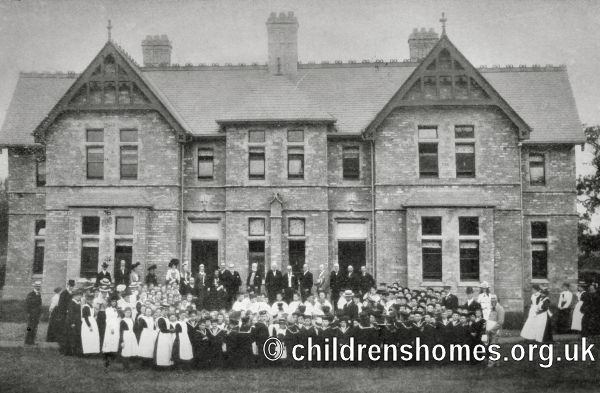
Newland Cottage Homes - opening of Whitby and Hartlepool Home, Hull, c.1907. © Peter Higginbotham
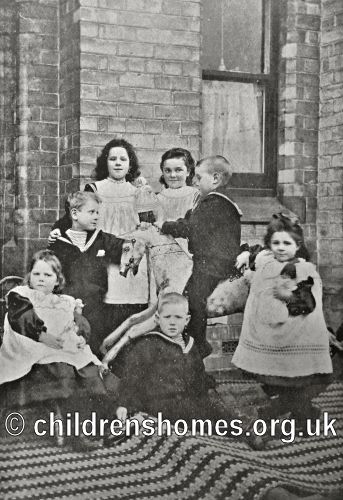
Newland Cottage Homes - new arrivals, Hull, c.1907. © Peter Higginbotham
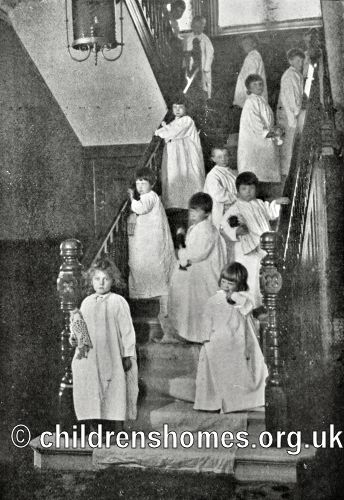
Newland Cottage Homes - bedtime, Hull, c.1907. © Peter Higginbotham
A hospital block at the north-west of the site was named The Joseph Rank Sanatorium in honour of its benefactor.
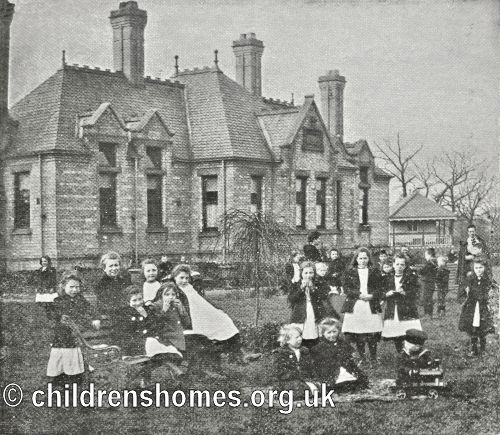
Newland Cottage Homes - at play in front of the hospital block, Hull, c.1907. © Peter Higginbotham
The school building, at the north of the site, was dedicated to St Nicholas. A large dining and assembly hall, known as Stratten Hall, lay at the north side of the school.

Newland Cottage Homes - St Nicholas' School, Hull, 2013. © Peter Higginbotham
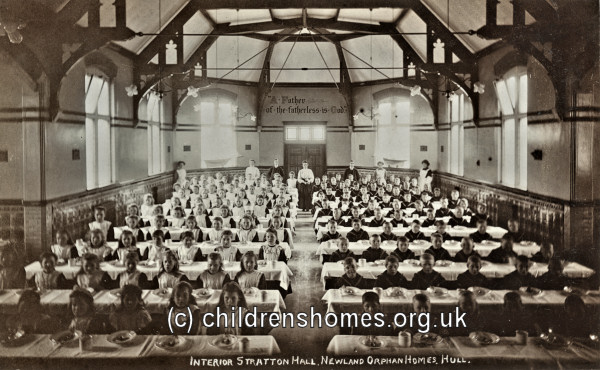
Newland Cottage Homes - Stratton Hall, Hull, c.1910. © Peter Higginbotham
A swimming bath, which is still in use, was opened in 1921 at the west of the site, adjoining the homes' laundry.
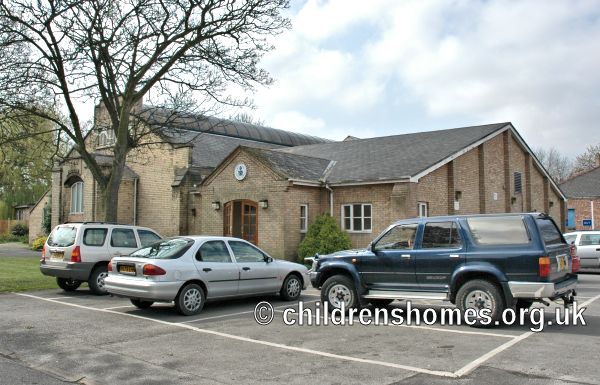
Newland Cottage Homes - West Lodge - swimming pool, Hull, 2013. © Peter Higginbotham
As well as school lessons, girls at the homes were trained in household skills such as sewing, cooking and laundry work to equip them for future employment as domestic servants.
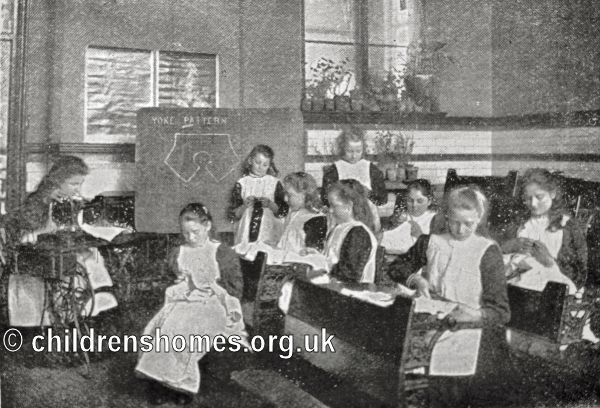
Newland Cottage Homes - sewing, Hull, c.1907. © Peter Higginbotham
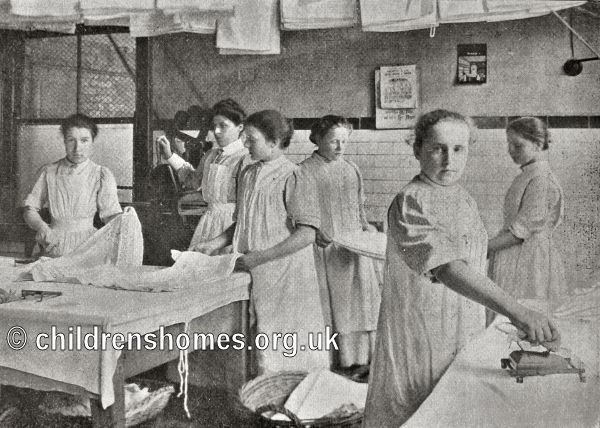
Newland Cottage Homes - the laundry, Hull, c.1907. © Peter Higginbotham
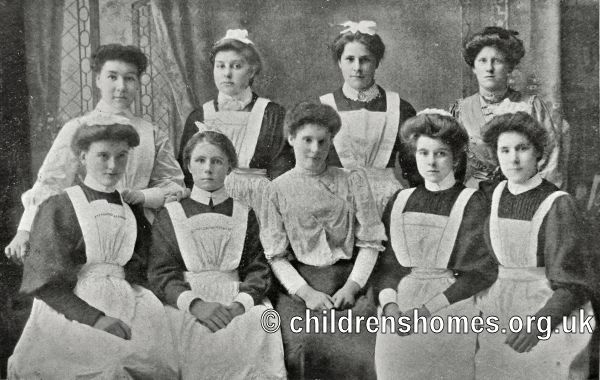
Newland Cottage Homes - girls gone to service, Hull, c.1907. © Peter Higginbotham
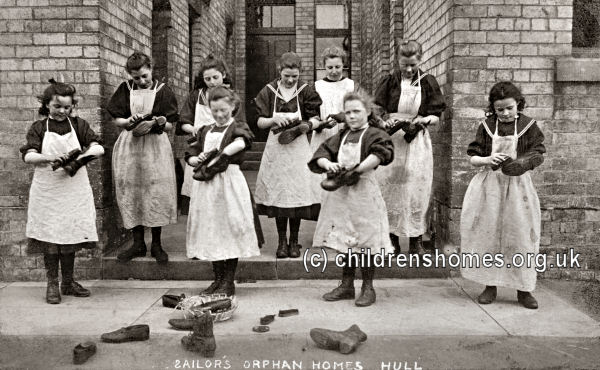
Newland Cottage Homes - girls cleaning boots, Hull, date unknown. © Peter Higginbotham
All the children were expected to contribute to the domestic chores in their cottage.
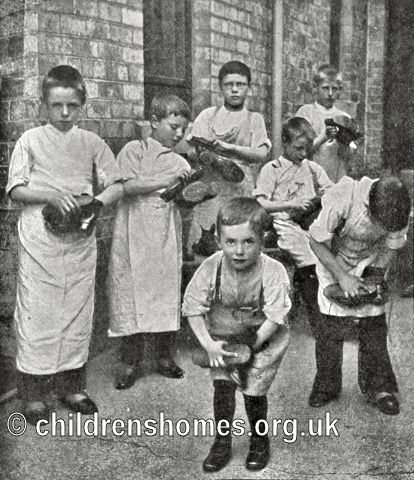
Newland Cottage Homes - boys cleaning boots, Hull, c.1907. © Peter Higginbotham
The institution had its own boys' band which performed at local social events. For a number of years, the band also went on fund-raising tours but in 1907 it was decided that the absence of the boys from the homes, and the attention they received, were not good for them, and the tours were then severely curtailed.

Newland Cottage Homes - boys' band in front of bandstand, Hull, c.1907. © Peter Higginbotham
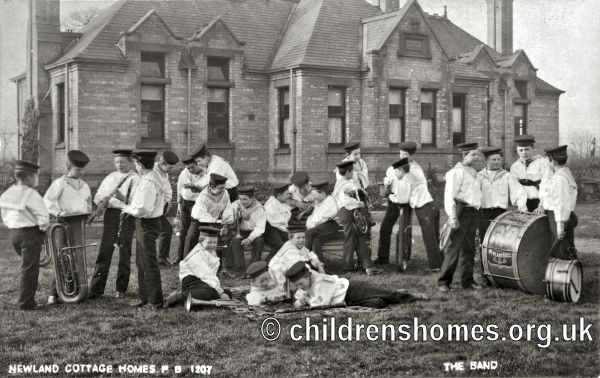
Newland Cottage Homes - boys' band in front of hospital, Hull, c.1907. © Peter Higginbotham
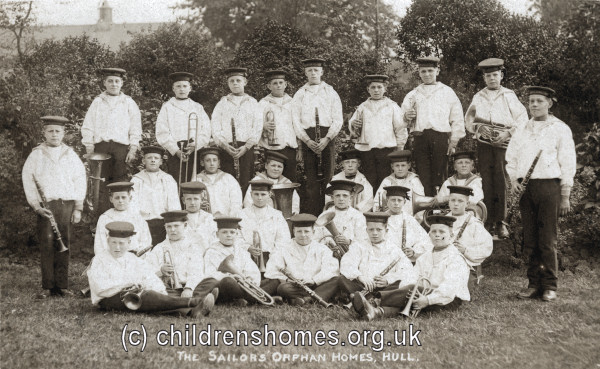
Newland Cottage Homes - boys' band, Hull, c.1907. © Peter Higginbotham
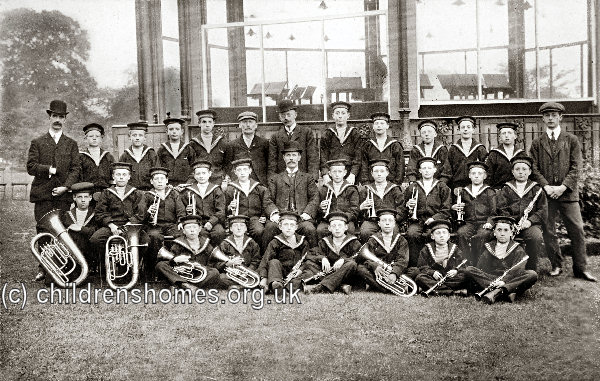
Newland Cottage Homes - boys' band, Hull, early 1900s. © Peter Higginbotham

Newland Cottage Homes - boys' band, Hull, early 1900s. © Peter Higginbotham
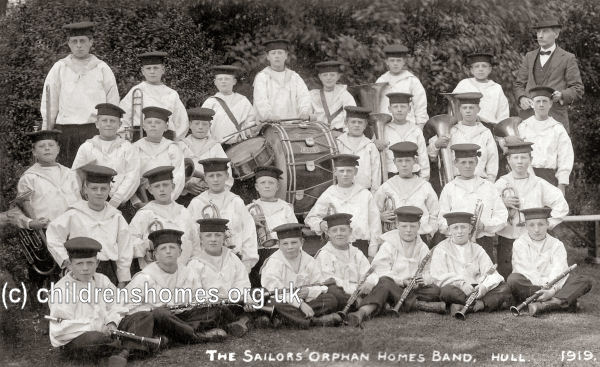
Newland Cottage Homes - boys' band, Hull, 1919. © Peter Higginbotham
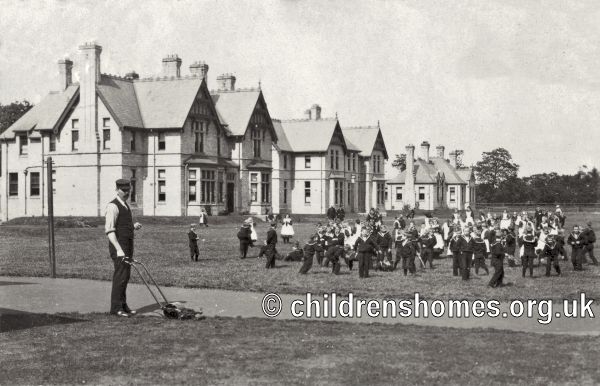
Newland Cottage Homes - boys in sailor suits in front of Titus Salt and Francis Reckitt Houses, Hull, c.1904. © Peter Higginbotham
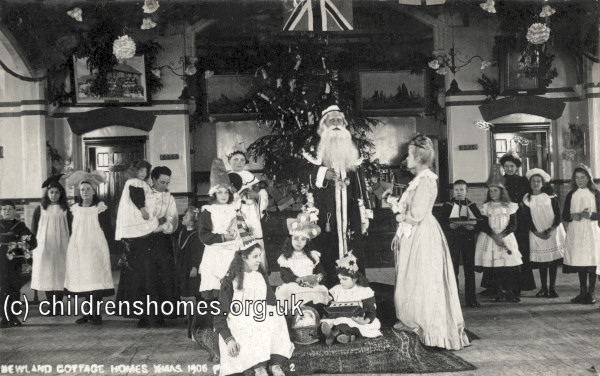
Newland Cottage Homes, Hull, Christmas 1906. © Peter Higginbotham
In July 1908, a children's holiday and convalescent home was opened on Cliff Road, Hornsea following a £2,000 donation for the purpose by Sir James Reckitt.
During the First World War, the homes took in the children of Royal Navy casualties, with the population of the establishment eventually reaching 360. After the war, the Society continued to care for the children of seafarers from all over the country. In the Second World War, the Newland children were evacuated to Brighouse and Pateley Bridge. In their absence, William Richardson House was occupied by the Women's Voluntary Service and Buckston Browne House became a day nursery for the children of mothers employed in war work. Francis Reckitt House became a stores depot and briefly housed Russian mariners while their vessel was being repaired in Hull Docks. Other houses sheltered local people made homeless after air-raids. Stratten Hall was used as an emergency feeding centre.
In 1950, the Port of Hull Society's Sailors' Orphan Homes were renamed the Sailors' Children's Society, and began a move towards supporting the care of children in their own homes where possible. From the 1960s, the Society began to provide accommodation for elderly seafarers, with the Captain Allison's House being established for this role in the Newland's former hospital building.
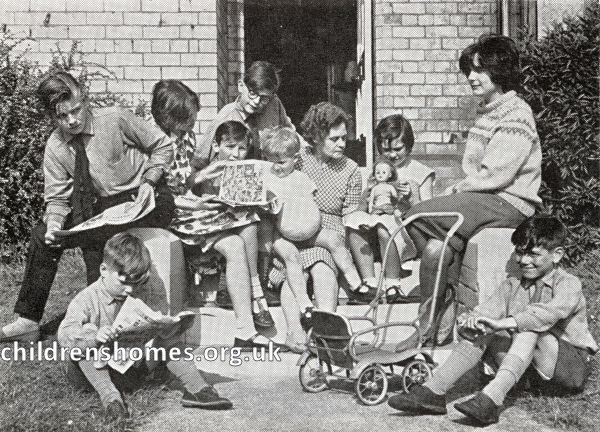
Newland Cottage Homes, Hull, 1960s.

Newland Cottage Homes, Hull, 1960s.
In the 1980s, transition homes were set up for teenagers moving from residential care to independent adult life and work. Accordingly, in 1991, the Society changed its name to become the Sailors' Families' Society.
Following a general decline in the demand for children's residential care, Newland began to specialise in the accommodation and care of abused children placed by local authorities. In 2001, Captain Allison House was closed in 2001 and Newland Children's Services was launched. However, a reduction in council referrals led to financial difficulties which affected the Society's ability to support seafarers' children in their own homes. In 2004, it was decided to close the Children's Services and dispose of the Newland site, with the St Nicholas School premises being leased to Hull City Council Education Department. The other buildings are now believed to be used as student accommodation.
Now again called the Sailors' Children's Society, the charity continues to assist families and children from Royal Navy, Merchant Navy and fishing backgrounds.
In 1897, the home's former Park Street building was sold to the Hull Technical Instruction Committee for £6,500. It became known as the Hull Municipal Technical College, later the College of Technology, now Hull College School of Art and Design.
Records
Note: many repositories impose a closure period of up to 100 years for records identifying individuals. Before travelling a long distance, always check that the records you want to consult will be available.
- Hull City Archives, Hull History Centre, Worship Street, Hull HU2 8BG. Holdings include: Admissions registers for boys (1857-1926, gives name of child, DOB and occupation of father, cause and date of fathers' death, number and ages of children left unprovided for, date of election, date entered house, and residence of mother or guardian); Admissions registers for girls (1863-1937, 1942-2002); Boys' reports on leaving (1870-1916, 1924-38, 1946); Girls reports on leaving (1924-83); Successful candidates for admission (boys, 1895-98, 1902-1946); Register of leaving (1874-1900); Minute books (1849-1950s); Annual reports (1837-1887).
Census
Bibliography
- Mitchell, Charles The Long Watch: A History of The Sailors' Children's Society, 1821-1961. (1961, Sailors' Children's Society)
Links
- The Sailors' Children's Society
- Yorkshire Film Archive holds a number of vintage films showing the work of the Society.
Acknowledgement
- Thanks to Edgar van Engeland for the picture of the uniformed staff member.
Except where indicated, this page () © Peter Higginbotham. Contents may not be reproduced without permission.


